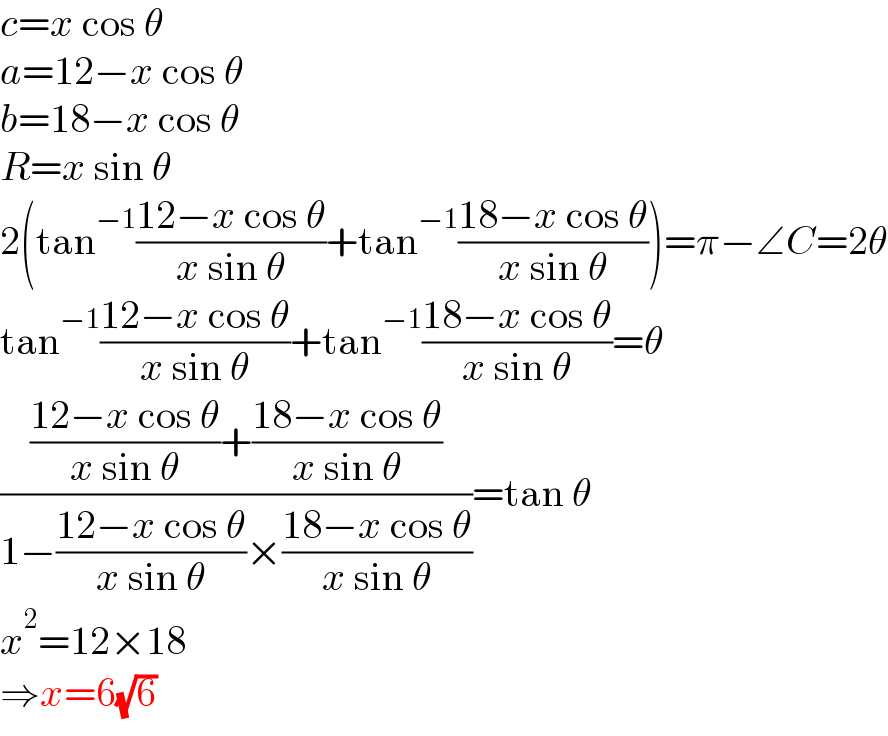
Question and Answers Forum
Question Number 168324 by leicianocosta last updated on 07/Apr/22

Answered by mr W last updated on 08/Apr/22

Commented by mr W last updated on 08/Apr/22

Commented by Tawa11 last updated on 08/Apr/22

| ||
Question and Answers Forum | ||
Question Number 168324 by leicianocosta last updated on 07/Apr/22 | ||
 | ||
Answered by mr W last updated on 08/Apr/22 | ||
 | ||
Commented by mr W last updated on 08/Apr/22 | ||
 | ||
Commented by Tawa11 last updated on 08/Apr/22 | ||
 | ||